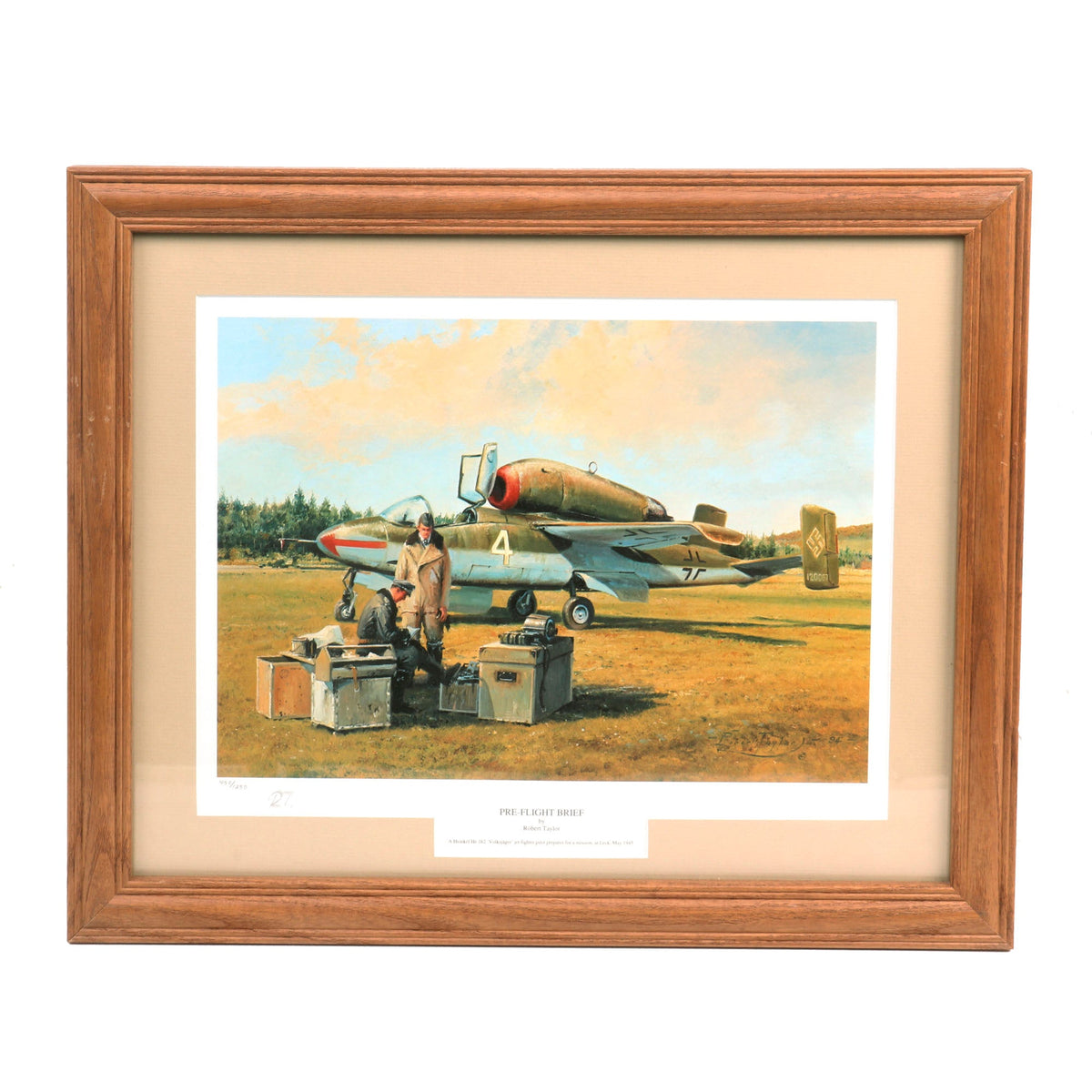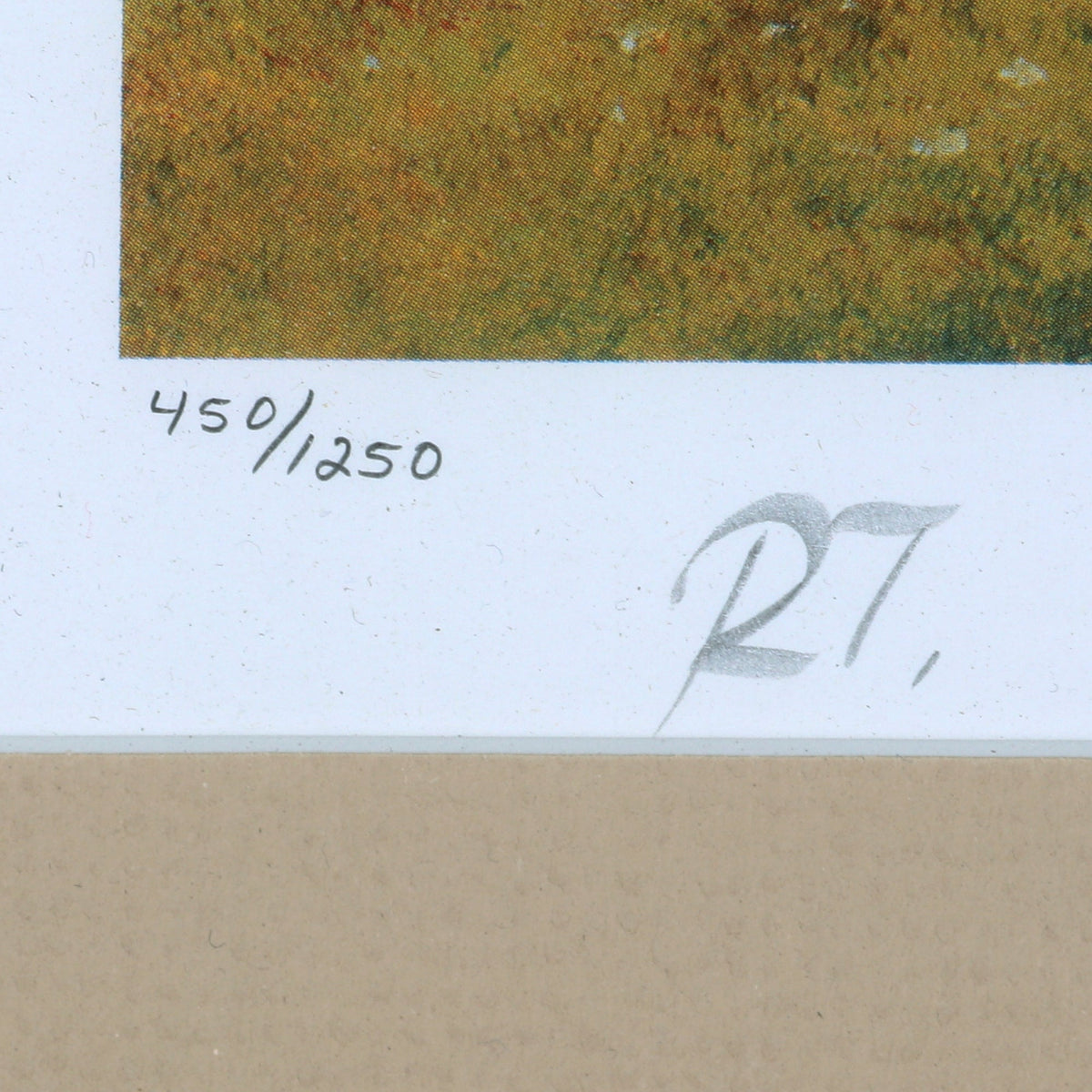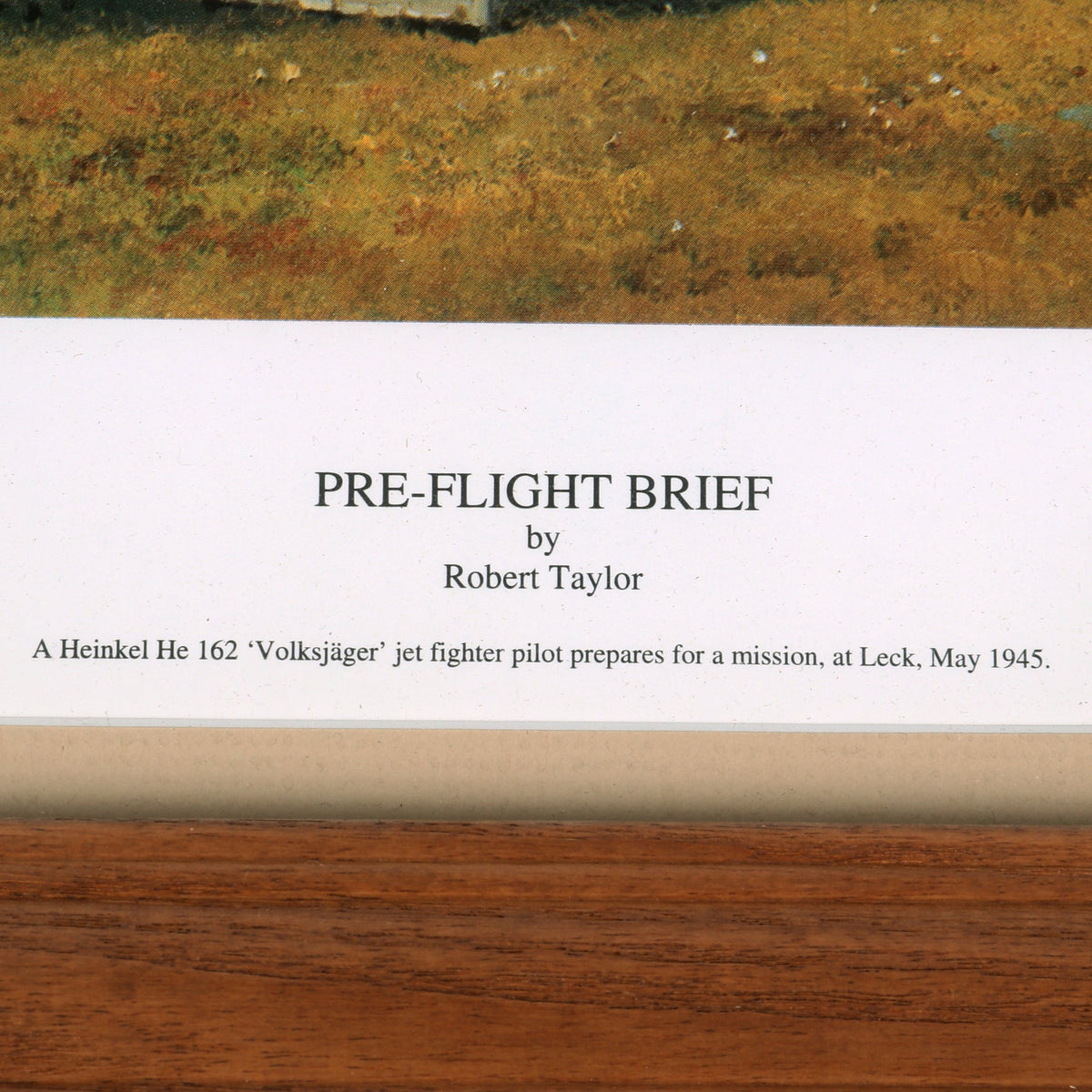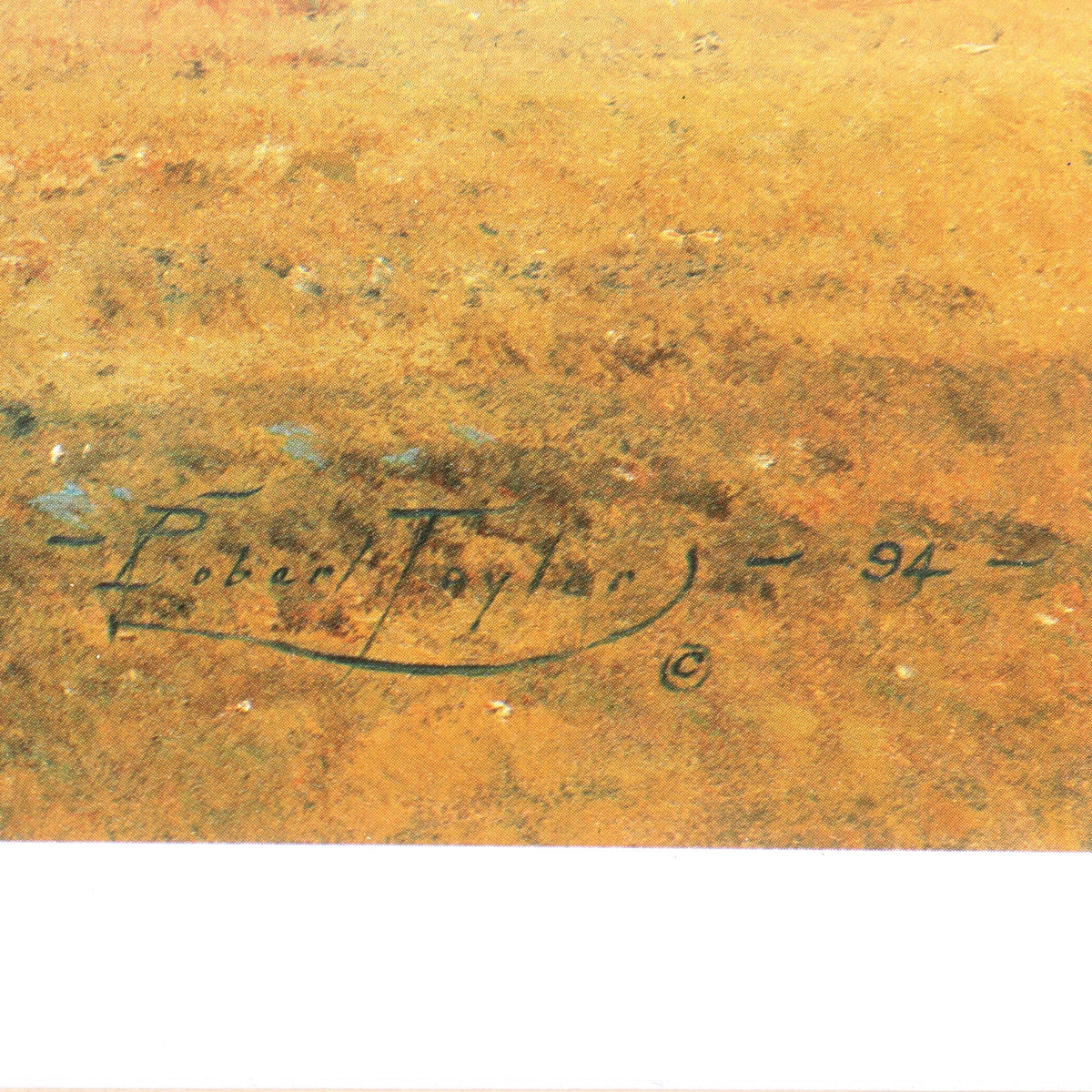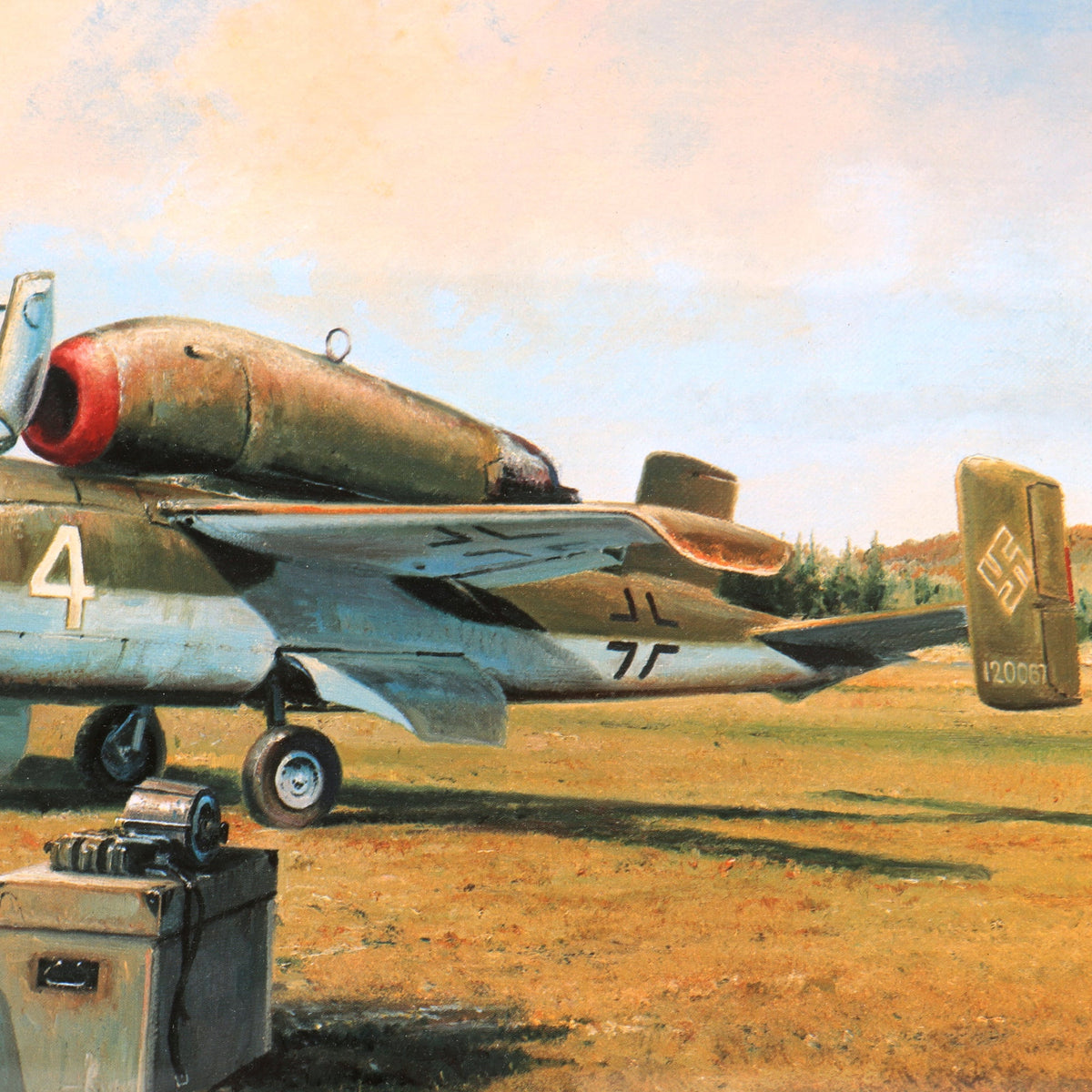Original Artwork Print: “Pre-Flight Brief” Painting of Heinkel He 162 Volksjäger Pilot Preparing for a Mission; Signed by Artist – 19″ x 15 ½”, in Museum Grade Frame Original Items
$ 495,00 $ 148,50
Original Item: Only One Available. This is a lovely framed print of Robert Taylor’s painting PRE-FLIGHT BRIEF, matted and put into a museum grade frame measuring 19″ x 15 ½”. This is number 450/1250 of a run of these prints made for collectors, and will make a fantastic display piece on any wall.
The painting is set very late in the war in Leck, Germany, near the North Sea coast. It shows a pilot preparing to fly, with an officer sitting down surrounded by some cases, chests, and what looks like a tool set. There also appears to be a magazine on top of one of the chests. The pilot is being briefed on the mission, and may be the only one undertaking it, as by this point in the war, the Luftwaffe was in tatters.
The painting is also described by the text beneath it, which reads:
PRE-FLIGHT BRIEF
by
Robert Taylor
A Heinkel He 162 ‘Volksjäger’ jet fighter pilot prepares for a mission, at Leck, May 1945.
Additionally, the print is signed by artist Robert Taylor with his initials RT on the left.
A great display item ready for further research and display!
The Heinkel He 162 Volksjäger (German, “People’s Fighter”) was a German single-engine, jet-powered fighter aircraft fielded by the Luftwaffe late in World War II. Developed under the Emergency Fighter Program, it was designed and built quickly and made primarily of wood as metals were in very short supply and prioritised for other aircraft. Volksjäger was the Reich Air Ministry’s official name for the government design program competition won by the He 162 design. Other names given to the plane include Salamander, which was the codename of its wing-construction program, and Spatz (“Sparrow”), which was the name given to the plane by the Heinkel aviation firm.
The aircraft was notable for its small size; although almost the same length as a Messerschmitt Bf 109, its wingspan was much shorter at 7.2 metres (24 ft) vs. 9.9 metres (32 ft) for the Bf 109. Most distinctive was its top-mounted engine, which combined with the aircraft’s low landing gear allowed the engine to be easily accessed for maintenance. This made bailing out of the aircraft without hitting the engine difficult, and the He 162 was the first single-engine aircraft provided with an ejection seat in an operational setting. The small size left little room for fuel, which combined with the inefficient engine resulted in very low endurance – on the order of 20 minutes – and it only had room for two autocannon, making it relatively underarmed for the era.
A series of fatal accidents during testing required a series of refinements that delayed the program. Although production lines were set up and deliveries began in early 1945, the impending defeat of Germany by that time made the effort pointless. Of nearly 1,000 aircraft on the assembly lines, only about 120 were delivered to the airfields and most of those never flew, usually due to shortages of parts, fuel, and pilots. Small numbers were used in development squadrons and these ultimately saw combat in a few cases during April 1945, yet the He 162 also proved to be quite dangerous to its own pilots as its tiny fuel load led to a number of aircraft crashing off field, while additional losses were attributed to structural failure.
Production was still running when the war ended in May 1945. Numerous aircraft were captured by the Allied forces along with ample supplies of parts from the production lines. Eric Brown flew one just after the war and considered it a first-rate aircraft with few vices. Several He 162s have been preserved in museum collections around the world.
Fast Shipping with Professional Packaging
Thanks to our longstanding association with UPS FedEx DHL, and other major international carriers, we are able to provide a range of shipping options. Our warehouse staff is expertly trained and will wrap your products according to our exact and precise specifications. Prior to shipping, your goods will be thoroughly examined and securely secured. We ship to thousands clients each day across multiple countries. This shows how we're dedicated to be the largest retailer on the internet. Warehouses and distribution centres can be located throughout Europe as well as the USA.
Note: Orders with more than one item will be assigned a processing date depending on the item.
Before shipping before shipping, we'll conduct a thorough inspection of the items you have ordered. Today, the majority of orders will be delivered within 48 hours. The delivery time will be between 3-7 days.
Returns
The stock is dynamic and we cannot completely manage it because multiple stakeholders are involved, including our factory and warehouse. So the actual stock may alter at any time. It's possible that you may not receive your order once the order has been made.
Our policy is valid for a period of 30 days. If you don't receive the product within 30 days, we are not able to issue a refund or an exchange.
You can only return an item if it is unused and in the same state as the day you received it. You must have the item in its original packaging.
Related products
Uncategorized
Uncategorized
Uncategorized
Uncategorized
Uncategorized
Uncategorized
Uncategorized
Uncategorized
Uncategorized
Armored Burgonet Helmet & Polearm from Scottish Castle Leith Hall Circa 1700 Original Items
Uncategorized
Uncategorized
Uncategorized
Uncategorized
Armoured Fighting Vehicles of the World: AFVs of World War One (Hardcover Book) New Made Items
Uncategorized
Australian WWII Owen MK1 Machine Carbine SMG Custom Fabricated Replica with Sling Original Items
Uncategorized
Uncategorized
Angolan Rebel 1970s era 60mm Inert Display Mortar from Angolan Civil War Original Items
Uncategorized
Uncategorized
Uncategorized
Uncategorized
